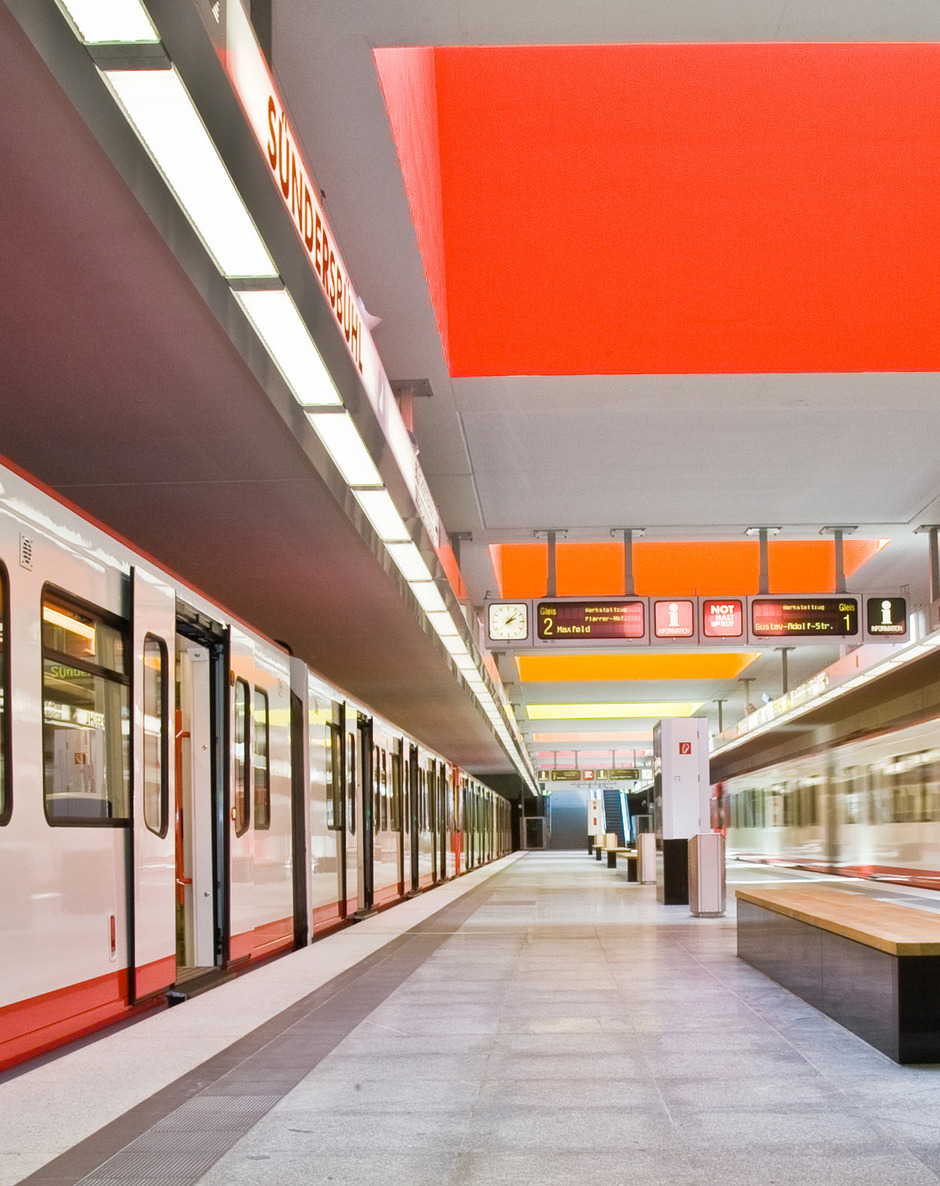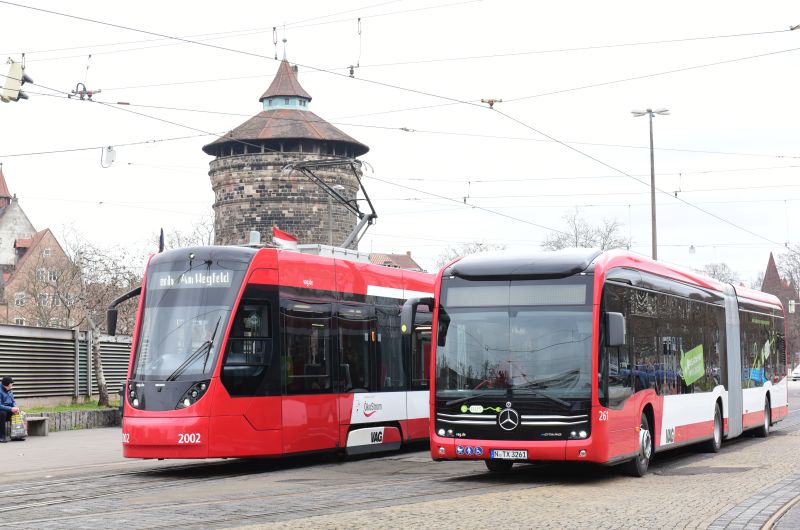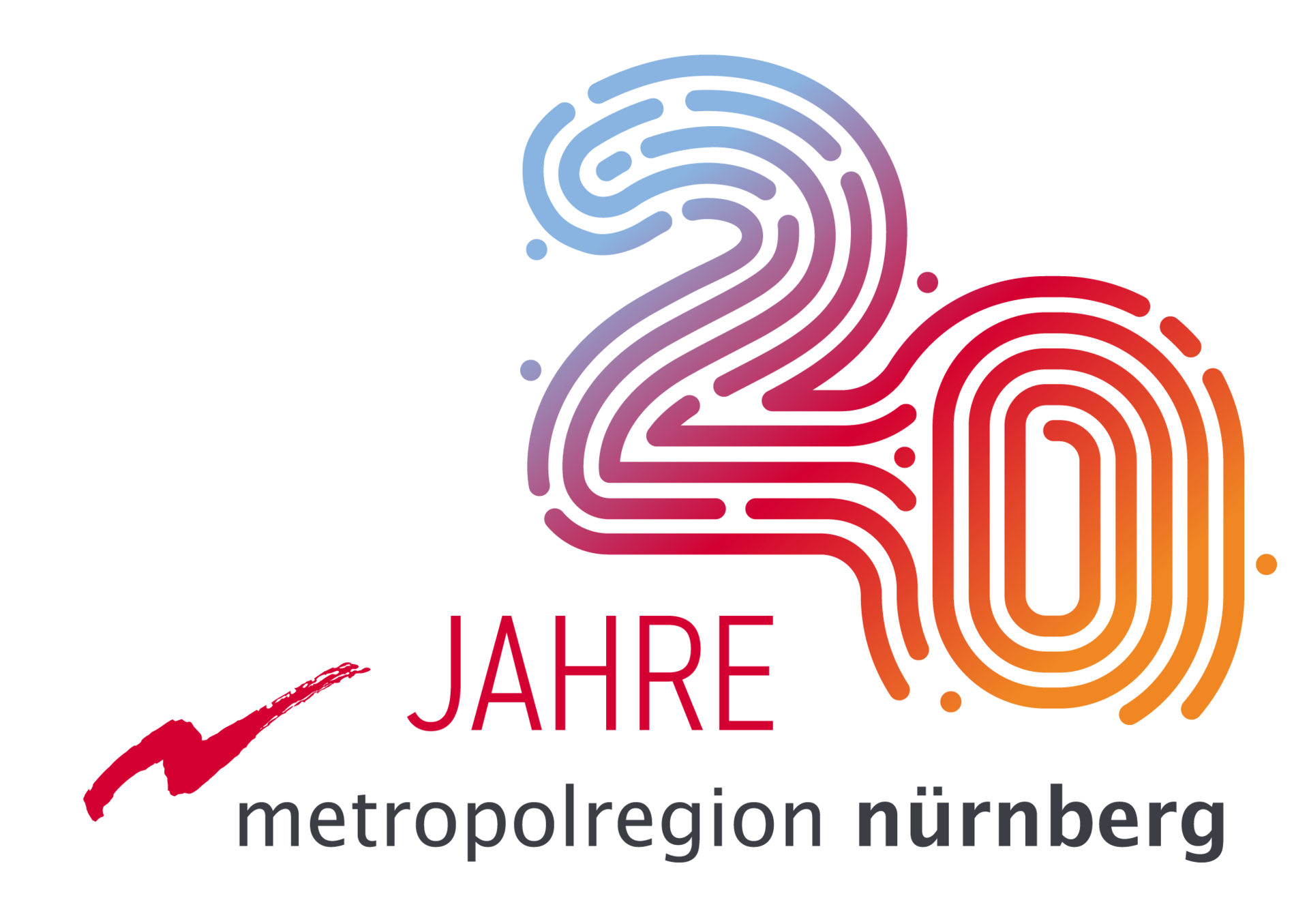
Getting around the Nuremberg Metropolitan Region
Public mobility
The Nuremberg Metropolitan Region is well connected – in the truest sense of the word. You don’t necessarily need a car to get to your destination with ease. The public transport operator Verkehrsverbund Großraum Nürnberg (VGN) covers virtually the entire metropolitan region: Trains take you from the suburbs into the city, while buses run from village to village and from one neighborhood to the next.
With the Deutsche Bahn rail network you can reach almost any destination in Germany and Europe within a matter of hours. And Nuremberg Airport serves destinations all over the world.
On the move in the Nuremberg Metropolitan Region
On average, it doesn’t take anyone more than half an hour to get to where they want to go. Whether traveling to work, going shopping, returning home, or taking an outing to interesting places, you can quickly get to any location within the Nuremberg Metropolitan Region.
Further information about the transport links in and around the Nuremberg Metropolitan Region can be found in the following sections.

Public transport in the Nuremberg Metropolitan Region
Verkehrsverbund Großraum Nürnberg (VGN)
Covering an area of more than 20,000 km² – equivalent to the size of Slovenia – the Verkehrsverbund Großraum Nürnberg (VGN) is the second-largest transport operator in Germany. Many people use public transport to commute to work every day. The good accessibility and links within the network area demonstrate the region’s cohesive structure.
The combined fare and transport network is probably the most tangible advantage of the Nuremberg Metropolitan Region in the day-to-day lives of residents in urban and rural areas alike. Wherever you happen to be in the metropolitan region – you can reach your destination with just one ticket! What’s more, many larger companies have an agreement with the local transport operator, enabling employees to buy season tickets at discounted rates. The VGN also has special offers for pupils, students, and certain target groups. Visit VGN for all for further information on special rates and discounts.
Whether traveling to work, going shopping, or taking an outing to places in the region – with the VGN you can conveniently get from A to B. Get started right away and find your next travel connection quickly and easily. Information on ticket prices and fares can be found on the VGN website. The Deutschlandticket can also be an interesting alternative. You can use it for unlimited travel on all local trains and forms of public transport throughout Germany for just 49 euros per month.
Further information about the Deutschlandticket can be found on the official VGN website.
Leisure tips for the Nuremberg Metropolitan Region
Verkehrsverbund Großraum Nürnberg (VGN)
The VGN (Verkehrsverbund Großraum Nürnberg) also has various leisure tips and special offers. There are suitable route networks available for outings to many popular places. From hiking and cycling to city tours – everything is within easy reach with the VGN. You can find out more by visiting VGN leisure tips.

VAG Nürnberg: Verkehrs-Aktiengesellschaft Nürnberg
Operating alongside the VGN is the VAG – running almost 400 of its own buses, trams, and subway trains as well as employing around 2,000 people. The VAG is a subsidiary of Städtische Werke Nürnberg. It provides local public transport in Nuremberg in the form of subway trains (U1, U2, and U3), trams, and buses. Further information on tickets (including season tickets) and timetables can be found on the company website.

Take the long-distance bus to other cities and regions
Affordable and relaxed travel
Whether Hamburg, Frankfurt, or Prague, the long-distance bus is a reliable, comfortable, and affordable way to reach your destination. Additional benefits on board include Wi-Fi, power outlets, toilets, seats with generous legroom, and snacks and drinks, making your trip as comfortable as possible. The numerous long-distance bus providers in the Nuremberg Metropolitan Region can give you information about connections, stops, prices, and departure times.
Long-distance bus companies providing services in the Nuremberg Metropolitan Region include Flixbus and Student Agency. Still haven’t found the perfect connection? Try looking on various other search websites that show you prices and connections from different long-distance bus providers at a glance. These include: busradar.com, CheckMyBus, and fernbusse.de
Further information and highlights
Mobility in the Nuremberg Metropolitan Region
With an area of over 20,000 km² - roughly the size of Rhineland-Palatinate - the Greater Nuremberg Transport Association (VGN) is the second largest transport association in Germany. The daily commuter relationships and accessibility by public transport are a clear criterion of a transport, economic and structural affiliation. The joint fare and transport association is probably the most tangible advantage of the Nuremberg metropolitan region for citizens in both urban and rural areas. Its goal is therefore also clearly defined: To achieve congruence with the area of the Nuremberg metropolitan region. With the recent expansion of the network area in north-eastern Bavaria to include two independent cities and six rural districts, the VGN has come a considerable step closer to this goal.
Further information:
www.vgn.de
The first German railroad, the ADLER, ran between Nuremberg and Fürth over a distance of 7.45 kilometers from 1835. It was the start of a completely new quality and quantity of mobility. From then on, both the railroad network and the transport industry in Franconia developed rapidly.
Today, 770 companies with 75,000 employees are active in the areas of transportation and logistics in the region and stand for globally successful innovations in the subclusters of drive technology, automotive, logistics, telematics and rail technology, such as the TRANSRAPID as the grandchild of the ADLER. As a network, the Center for Transportation & Logistics Neuer Adler e.V. (CNA) connects the competence partners from industry, modes of transport, transport companies, scientific institutions, research and business development regionally and nationally.
Further information:
www.c-na.de
The Nuremberg metropolitan region is the intersection of major European long-distance routes of great importance for European north-south and west-east traffic: the east-west highway connections London/ Amsterdam - Vienna - Budapest and Paris - Prague and the north-south highway connections Stockholm - Hamburg - Zurich - Milan and Copenhagen - Berlin - Innsbruck - Verona.
Important intersections include the Feuchtwangen (A6/ A7) and Nuremberg/ Nuremberg East (A3/ A6/ A9) interchanges as well as Bamberg (A70/ A73) and Wernberg-Köblitz (A6/ A93). Directly connected to this freeway network is the Port of Nuremberg, which is one of the best developed inland ports in Germany and will be the most modern freight transport center in southern Germany, as well as - in future with a direct freeway connection - Nuremberg International Airport with numerous non-stop connections to European business centers and vacation destinations.
Further information:
www.abdnb.bayern.de
Gateway to the Nuremberg metropolitan region. Proximity to the city center and direct subway connection, short distances to the terminal and the 8,000 parking spaces as well as outstanding service offerings make Nuremberg Airport the “Best German Airport” (awarded the Business Traveller Award 2017).
Nuremberg Airport offers around 60 non-stop connections and connecting flights to over 300 other destinations worldwide. Thanks to its modern appearance, Nuremberg Airport is the representative gateway of the Nuremberg metropolitan region. It is one of the TOP 10 major German commercial airports and has received the Business Traveler Award as “Best German Airport” for the tenth time in a row. The subway line U2 commutes to the main station in just 12 minutes and to the exhibition center in approx. 25 minutes.
Further information:
www.airport-nuernberg.de
The Nuremberg metropolitan region is a hub for European north-south and west-east passenger and freight traffic. In particular, the priority trans-European transport corridors Helsinki - Valetta and Strasbourg - Danube intersect here.
The region has ICE connections with Leipzig - Berlin, Frankfurt - Cologne - Düsseldorf, Hanover - Hamburg - Bremen, Munich and Vienna. All major cities in the EUROPEAN METROPOLIS REGION OF NUREMBERG can be reached directly via the rail network. With 150 long-distance trains, 320 local trains and 180,000 passengers a day, Nuremberg Central Station is one of the 20 largest railroad stations in Germany. All major cities in the EUROPEAN METROPOLITAN REGION OF NUREMBERG can be reached directly by rail. The Nuremberg trimodal freight center, the largest multifunctional logistics center in southern Germany, is directly connected to the rail network. The Nuremberg marshalling yard is the world's largest existing gradient yard.
This rail axis is indispensable as the backbone of the Central-South-East European rail network. It will create a network based on common standards that will promote transport and trade in a huge region of Europe. Rail capacity, especially for freight traffic, is to be significantly increased and travel times and costs for freight and passenger trains are to be substantially reduced. Cross-border traffic is expected to increase from 25% to 50% on the middle sections of the route. The expansion and electrification of the line between Nuremberg and the Czech border by 2015 should reduce the journey time between Nuremberg and Prague from the current almost 6 hours to 3:20 hours.
The expansion and modernization of the railroad axis Berlin - Nuremberg - Verona - Milan - Bologna - Naples - Messina - Palermo is a priority project within the Helsinki - Valetta corridor.
A combined expansion/new construction on this main European north-south route is intended to increase the speed and capacity of freight and passenger traffic and thus achieve sustainable effects. Travel times will be significantly reduced on all sections, the attractiveness of rail will be increased, the roads along this route will be relieved by shifting freight and passenger traffic to rail and environmental protection will be improved (especially in the Alps). Among other things, the Brenner base tunnel and a bridge near Messina to Sicily are to be completed by 2015, as is the new construction/expansion of the Erfurt - Nuremberg line by 2017.
The Rhine/Meuse-Main-Danube inland waterway is a priority project in the Trans-European Transport Network. As a direct link between the North Sea (Rotterdam) and the Black Sea (Constanta), it is the most important and most promising European inland waterway. The Rhine-Main-Danube Canal section with several modern ports runs right through the Nuremberg metropolitan region.
The elimination of bottlenecks improves the navigability and competitiveness of inland waterway transport compared to other modes of transport and thus creates an incentive to shift freight volumes from road to water on this increasingly congested east-west axis.
Increasing the overall capacity of the route by around 30% could shift around 5 billion tkm of freight to water in the long term. Improved navigability could reduce transport costs per tonne by around 20-30%. The project will also facilitate the integration of the transport networks of several new EU Member States into the TEN-T and contribute to economic and social cohesion through job creation.
With an annual handling capacity of more than 15 million tons, bayernhafen Nürnberg is the largest and most important multimodal freight transport and logistics center (GVZ) in southern Germany. With more than 200 companies and around 6,700 jobs, the site is already an important business location in the Nuremberg metropolitan region and in Bavaria. The trimodal freight center is directly connected to road, rail and water and ideally links these infrastructures for multimodal transport chains. This also offers ideal conditions for the development of eco-efficient logistics.
The location is at the intersection of the Trans-European Networks (TEN) and is considered a gateway for South-East Europe. This central distribution location in southern Germany not only reaches around 27 million inhabitants within a radius of 200 km, but is now also one of the “Champions League” of freight villages in Europe. From bayernhafen Nürnberg, Bavarian companies export their products all over the world; conversely, goods from all over the world arrive here and are then distributed further. This secures the locations of industrial and commercial companies in the Nuremberg metropolitan region.”
Further information:
www.bayernhafen.de
In addition to “drilling thick planks” in transport infrastructure, concrete projects with literally “tangible” benefits for citizens are part of the self-image of the Transport and Planning Forum.
One example of this is the online carpooling service MiFaZ in the Nuremberg metropolitan region. Launched in July 2010 as a joint Internet service by 26 cities and districts in the metropolitan region, it sees itself as a genuine urban-rural partnership and a supplement to local public transport, especially in rural regions: Rides can be offered and searched for quickly and free of charge online.
Further information:
Online-Mitfahrzentrale der EUROPÄISCHE METROPOLREGION NÜRNBERG
In a position paper, the Transport and Planning Forum has spoken out in favor of the construction of the Stadt-Umland-Bahn (StUB) from Nuremberg to Erlangen and Herzogenaurach.
The position paper can be downloaded here.


